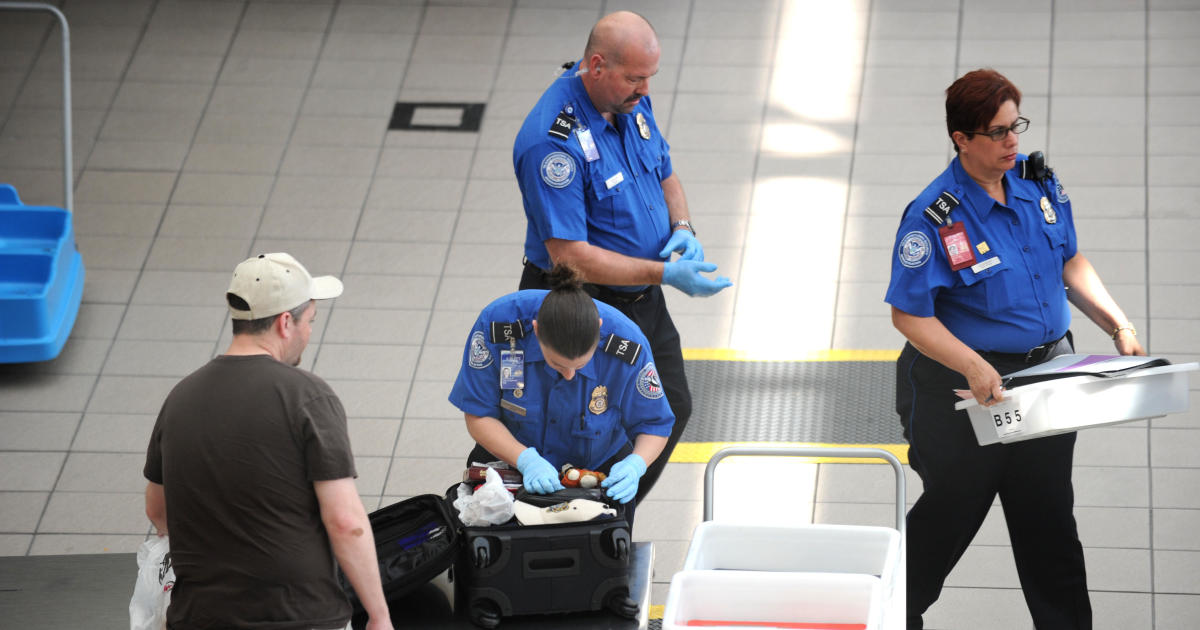
Last Updated May 17, 2018 7:30 PM EDT
Following an “alarming spike” in assaults on transportation security officers at airport checkpoints, the Transportation Security Administration began what’s referred to as a “95 List” of unruly passengers.
The list so far is a short one. For now, it has less than 50 people, the Transportation Safety Administration says. In fiscal year 2017, TSA notes, there were over 34 assaults transportation security officers.
“In most cases this is someone where there was assaultive behavior or someone tried to circumvent security screening,” Executive Assistant Administrator for Security Operations Darby LaJoye told CBS News Transportation Correspondent Kris Van Cleave in a phone interview Thursday.
The matter would be significant enough that police would be called and prompt a report to headquarters. Since its creation in February, LaJoye says two to three dozen people have been added to the list, which is shared with airports as a “law enforcement awareness measure.”
LaJoye was asked about the list by members of a House Homeland Security Subcommittee during a hearing Thursday. It was the first time the list had been discussed publicly.
“I am concerned about the civil liberty implications of such a list,” Rep. Watson Coleman, D-N.J., said during the hearing.
Being placed on the 95 list does not, on its own, result in a flyer being denied the ability to board a plane or additional secondary screening.
“This is simply an awareness that somebody is going through the checkpoint that has demonstrated concerning assaulting behavior in the past to our officers,” LaJoye told members of the Transportation and Protective Services Subcommittee.
The existence of the 95 list was first reported by the New York Times, but the agency says it posted a Privacy Impact Statement on DHS.gov in July, asking for public comments. TSA says it received no comments.
The agency disputes the assertions in the Times that loitering by a checkpoint or simply swatting the hand of a screener during a pat down or being rude or arguing with a screener could land a flyer on this list.
Names aren’t added to the list frequently — putting new names on the list is not a daily occurrence, but over time the size of the list could grow. According to LaJoye there is a monthly and quarterly review process during which someone could be removed from the list.
TSA acknowledged flyers may not know they’ve been added to this list which drew criticism from Rep Bill Keating, D-Mass., during the hearing.
“If you’re going to, you know, affect behavior, it would be great that they knew they were on the list, and it would be great if they’re on the list that they have a way to appeal that,” Keating said to LaJoye.
Sources familiar with the matter confirm the list is described in a 5-page directive that prohibits the use of profiling based on race, religion or gender as the sole reason for being on the list, although these could be considered as factors when relevant or coinciding with specific intelligence.
Federal security directors, top T.S.A. security officials at airports and top Air Marshals supervisors can request a person be added to the 95 list. Only the T.S.A. administrator, his deputy and the top two officials at the agency’s Office of Intelligence and Analysis may add or remove people from the database.
TSA said in a statement that it is “committed to its people and wants to ensure there are safeguards in place to protect Transportation Security Officers (TSOs) and others from any individual who has previously exhibited disruptive or assaultive behavior at a screening checkpoint and is scheduled to fly.” The agency said there was a privacy impact assessment that was published before it established the watch list.
© 2018 CBS Interactive Inc. All Rights Reserved.

